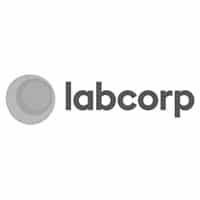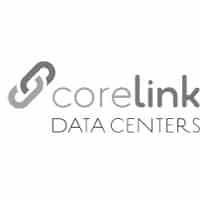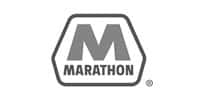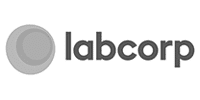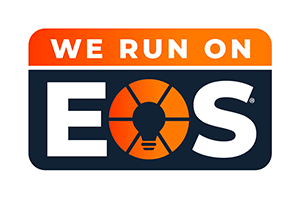IT and OT – though they are two different things, the previous tendency to “divide and conquer” when it came to strategy, management and solutions is going away. When it comes to IT and OT, their worlds are colliding inside data centers. Operating as two separate entities without communication and collaboration is not effective, efficient or ideal. Though not all data centers are operating with IT/OT convergence, the transition has begun – IT/OT convergence is already happening in healthcare, energy, aviation, manufacturing, transportation, defense, mining, oil and gas, utilities, natural resources sectors, and more – and it is only a matter of time until it is simply the data center industry standard.
 OT (operational technology) has a few primary focuses – maximizing uptime, ensuring the proper function of equipment and infrastructure, and the security and availability of operational assets and processes. OT is a blend of both hardware and software so that environmental maintenance can occur. Though some are not even familiar with the name “OT,” OT is essential to the day-to-day operations of a data center. The convergence of IT and OT is happening because the specific technology involved in operational technology (such as communications, software and security) is evolving and OT is integrating more information technology (IT) into their operations.
OT (operational technology) has a few primary focuses – maximizing uptime, ensuring the proper function of equipment and infrastructure, and the security and availability of operational assets and processes. OT is a blend of both hardware and software so that environmental maintenance can occur. Though some are not even familiar with the name “OT,” OT is essential to the day-to-day operations of a data center. The convergence of IT and OT is happening because the specific technology involved in operational technology (such as communications, software and security) is evolving and OT is integrating more information technology (IT) into their operations.
IT focuses on the use and integrity of data and intellectual property. Its focus is on things like storage, networking devices, computers, and infrastructure that facilitate improved information storing and security. In contrast to OT, IT (information technology)’s security focus is the protection and preservation of confidential information. Though they are two different things, they are not mutually exclusive and what data centers are finding is that there is more than just overlap, a convergence is happening. Schneider Electric elaborates on why IT and OT worlds are colliding, “Security systems are needed to protect facilities. IT is needed to run security systems. Apply a bit of basic math theory to these statements, and it is easy to conclude that IT is then needed to protect facilities. If you are thinking this sounds like OT and IT convergence, you’re right; but security requirements push the boundaries even further to compel departmental collaboration between OT and IT. At the core, lies the need for reliable delivery of clean and continuous power.”
To maintain uptime and maximize security, IT and OT must work together. Think about factors that could lead to downtime or a security breach – problems with infrastructure management, equipment overheating, fire, flood, problems with lighting, problems with the security system, a physical breach of security, a cyber-attack, and more. Many of these things fall under the OT umbrella but some fall under the IT umbrella. And, in reality – managing and mitigating them involves both IT and OT. In order to properly remote-manage a data center, and maintain RTOI (real-time operational intelligence), a proper DCIM must be in place and IT must be able to communicate with monitoring systems so that proper and accurate information is received. As we have previously discussed, when this information is received in real time, downtime can be significantly reduced. TechTarget elaborates on why IT and OT are converging in the way that they are now, and how it will improve efficiency and maximize data center operations, “While IT inherently covers communications as a part of its information scope, OT has not traditionally been networked technology. Many devices for monitoring or adjustment were not computerized and those with compute resources generally used closed, proprietary protocols and programmable logic controllers (PLC) rather than technologies that afford full computer control. The systems involved often relied on air gapping for security. Increasingly, sensors and connected systems like wireless sensor and actuator networks (WSANs) are being integrated into the management of industrial environments, such as those for water treatment, electric power and factories. The integration of automation, communications and networking in industrial environments is an integral part of the growing Internet of Things (IOT). IT/OT convergence enables more direct control and more complete monitoring, with easier analysis of data from these complex systems from anywhere in the world.”
 When you integrate infrastructure management systems, your data center information will be able to flow between departments with ease. Data from IT can and should be an indispensable tool in providing the information OT needs to formulate strategy and make decisions. The result will be increased productivity, improved efficiency, decreased downtime, and enhanced security. With integration, knowing what your data center needs will be timely and accurate, making effective maintenance far easier. Your RTOI will be accurate so, should you need to make a quick adjustment – whether large or small – you will hopefully know before you experience any problems or catastrophic events.
When you integrate infrastructure management systems, your data center information will be able to flow between departments with ease. Data from IT can and should be an indispensable tool in providing the information OT needs to formulate strategy and make decisions. The result will be increased productivity, improved efficiency, decreased downtime, and enhanced security. With integration, knowing what your data center needs will be timely and accurate, making effective maintenance far easier. Your RTOI will be accurate so, should you need to make a quick adjustment – whether large or small – you will hopefully know before you experience any problems or catastrophic events.
So, it seems like a simple solution, right? And, clearly based on the advantages of working together any data center would jump all over it? Though IT/OT convergence are certainly the future of data centers, it is not necessarily an easy task to bring the two together. GE elaborates on the challenges of IT/OT convergence, “Many cultural and technological impediments make IT/OT convergence challenging. From the perspective of culture, IT and OT have traditionally been well-separated domains. When smart assets and infrastructure are introduced, it becomes necessary to figure out new ways to divide ownership and responsibility for the management and maintenance of that infrastructure. This can potentially lead to turf wars and blame games. On top of that, OT standards have generally been proprietary and vendor specific, optimized exclusively for specialized tasks. Unifying IT and OT requires implementing well-defined standards that scale all the way from assets to data centers and back. These standards also need to account for enhanced security, since operational assets that were previously disconnected from widespread communication networks could now be vulnerable. It’s all about the enterprise. All that daunting work can be made easier, however, by the concept of “enterprise architecture.” Enterprise architecture is a top-down methodology for developing architecture by focusing first on organizational goals, strategy, vision, and business before delving into the technological specifics. This approach could keep IT/OT deployment aligned with achieving Industrial Internet goals. Going through the process of integrating IT and OT might require some initial effort, but the payoffs are worth it.”
With any changes in data centers, there are growing pains. Logistical intricacies to fine tune. Security challenges. There will always be a list of challenges in implementing change. But, the convergence of information technology and operational technology is a value-added change. The specific values will vary amongst industries but, make no mistake, convergence will have a payoff. Though there will be challenges in converging IT and OT, success is very achievable with thorough planning, proper execution and full implementation of an IT/OT strategy. All data center team members must be fully educated and on board to be properly prepared for the change. Make no mistake; IT and OT are not the same. Though they are converging they are different and separate yet, joint structures. If a harmony and alignment of strategies can be found, IT and OT convergence can be a stunning success.
By converging IT and OT, there will be similar technology and this overlap of sorts will allow the two to work together synergistically. This will be beneficial in a variety of ways but one of the most prominent ways is that it will be cost-saving. Not only because costly downtime will be reduced but because IT and OT teams can, in some ways, be combined and redundant team members pruned for efficiency. In addition to this, convergence will provide risk reduction because there will be an overlap of security issues and those issues will be able to be simultaneously addressed. And, perhaps most significantly, data centers will enjoy enhance performance from IT/OT integration. Bad redundancies (such as similar but separate operations that could be under one umbrella) and good redundancies (such as finding ways in which IT and OT can synergistically work together) enhanced. Further, convergence will improve performance in the form of enhanced system availability. Better performance that will mean more uptime because of a reduced risk of things like cyber-attack, poor infrastructure management, power failure and more. Through a collaborative effort, a focus on future technologies, a drive toward maximizing uptime and minimizing security risk, and a desire for improved efficiency, data centers will successfully achieve IT/OT convergence and step into the future of data centers.


